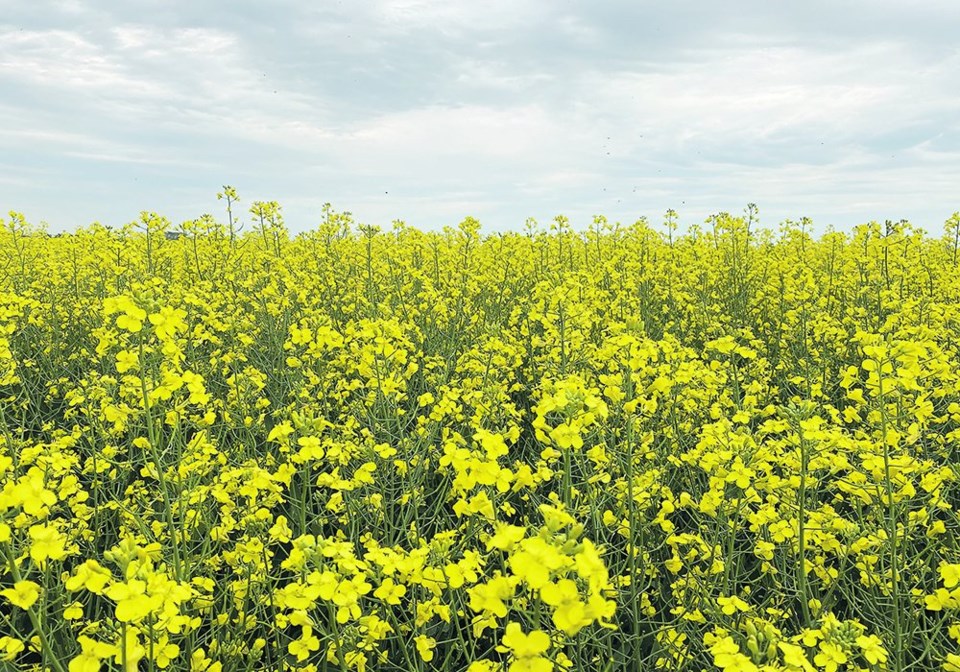The extreme tightness of Canadian canola supply gives that crop independent strength, but producers can’t ignore the influence of the wider oilseed market.
The factors supporting oilseeds in 2022 are the La Nina that could spark South American drought and the global shortage of crude oil that has its price running higher. Strong crude oil tends to increase the amount and value of vegetable oil going into the fuel market.
Factors that could put downward pressure on oilseed prices include expectations for increased palm oil production in 2022 and soaring fertilizer costs, which tilt the field in favour of more soybeans in the annual acreage battle. Corn requires much more fertilizer than soybeans.
Also, the market wonders whether current forecasts for steady soybean demand from China will hold true when the hog sector there is losing huge amounts of money.
Let’s look at each of these issues.
La Nina’s cooling of water in the equatorial Pacific can lead to dry weather in Brazil and Argentina, but it does not guarantee drought.
So far Brazil’s farmers are making good progress seeding soybeans and the first corn crop. A dry September has given way to regular rain this month. The forecast into early November is for normal to above normal rainfall.
The current production forecast for Brazil from the United States Department of Agriculture, which assumes normal rain, a 4.6 percent increase in acreage and trend line yields, is for 144 million tonnes of soybeans, up from 137 million last year. For corn it is 118 million tonnes, up from last year’s drought-reduced 86 million.
Things are not so good in Argentina, where it’s dry in northern regions. The forecast into November continues dry.
The USDA forecast for Argentina’s soybeans, assuming normal weather and a 2.6 percent acreage increase, is for 51 million tonnes, up from 46.2 million last year. For corn it is 53 million tonnes, up from 50 million last year.
Strong crude oil markets usually support vegetable oil and oilseed prices. Last week, West Texas oil rose above US$80 a barrel for the first time since late 2014.
Demand globally for crude and natural gas is exceeding production. The Organization for Petroleum Exporting Countries does not want to go beyond its goal of restoring production by 400,000 barrels a day each month, fearing the market will become swamped in 2022. In fact, some members can’t even meet this modest goal.
Meanwhile, oil producers in North America are cautious about spending to raise production, preferring to use increased income this fall to reduce debt and pay stockholders dividends, which were cut last year when oil prices plunged.
This has some analysts talking about the possibility of $100 oil, particularly if the pandemic receded, allowing more international air traffic, or if the Northern Hemisphere winter is colder than normal.
Expensive energy costs, China’s ban on fertilizer exports and strong demand from farmers hoping to cash in on high crop prices have the price of crop nutrients soaring. Expensive inputs might have farmers considering shifting more acres into soybeans in 2022 because they fix their own nitrogen. If soy area rises, it would put downward pressure on prices.
Palm oil prices hit record highs this fall supporting oilseeds. COVID-inspired restrictions on imported labour have created severe worker shortages on plantations in Malaysia. Also, the palm trees there and in Indonesia are still recovering from dry weather a few years ago associated with the last El Nino.
However, analysts believe the trees will be back to full production in 2022, and last week Malaysia lifted its COVID ban on foreign labour.
That has analysts expecting an easing of palm oil prices into mid 2022, and that would take the pressure off of other edible oils.
Oilseed prices this fall are supported by forecasts that see China continuing its strong demand for soybeans. The USDA pegs its imports at 101 million tonnes, up from 99 million last year. Just last week, USDA’s export report showed Chinese buyers taking 2.9 million tonnes, the most in more than a year.
But China’s hog producers are hemorrhaging money as disease pressure forces them to sharply increase cull rates, which leads to increased pork supply and plunging pork and hog prices.
That has weakened demand for soy meal and this summer Chinese soy crushers were losing money, leading to ideas they would import fewer soybeans.
But strong vegetable oil prices might be coming to the rescue. Reuters reports the sharp rise in oil revenue is offsetting the losses on the meal side restoring crusher profit margins.

